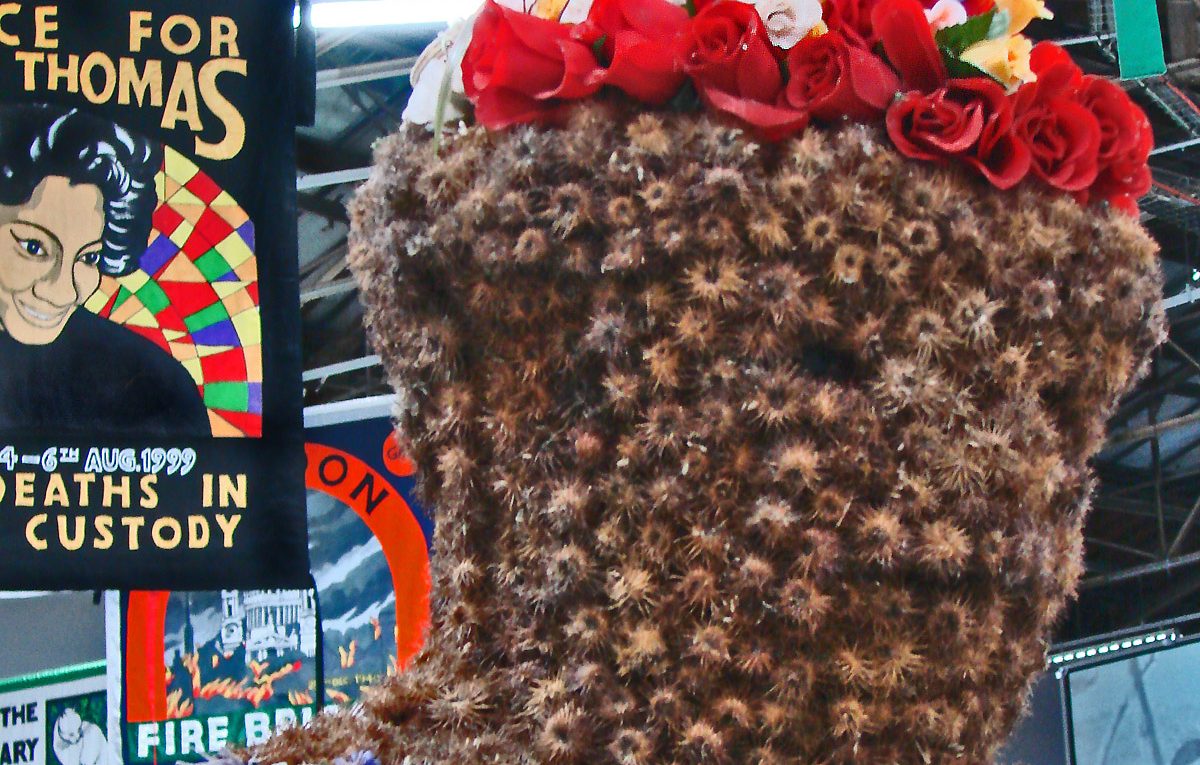Let’s Hear It for the Burry Man, the Whiskey-Drinking Folk Hero Covered in Burrs

Remember when people thought the Internet would bring us all together and give everyone access to knowledge that they otherwise would never have had? Well, the dream is still alive in some corners of Twitter. Take, for instance, this thread of European folk traditions shared by an account called @onionweigher. The first tradition in the list? Scotland’s Burry Man!
As the article in the tweet explains, the Burry Man makes his appearance at the Ferry Fair Festival, held each August in Queensferry, Scotland. As part of the fair, a man is dressed head to toe in burdock seedheads, which are covered in prickles and act as a natural Velcro, sticking to fabric. Once he’s covered, the Burry Man walks through the town with two attendants, stopping at taverns to accept offerings of whiskey.
The Scots Magazine interviewed one Burry Man, John Nicol, about what the experience is like.
John admitted that as soon as he starts being dressed he feels he is somehow set apart, facing a lonely, isolated time despite being the centre of attraction, tingling with almost a mystical element so outside rational thought, body and mind parted so he seems spectator as much as participant. Yet at the same time, the event is a physical challenge (and one with considerable discomfort), even to having vision framed “by the bush you are peering out from”.
The first recorded Burry Man ceremony was in 1687, although the tradition is thought to be older than that. Although there are some theories about the meaning of the Burry Man, the exact reason for the ceremony has been lost.
Onion Weigher also posted a thread of other European folk traditions, including the Welsh Mari Lwyd and the infamous Krampus.
Here in the United States, cultural appropriation runs rampant among white folks who feel disconnected from their own heritage. But the Burry Man and similar traditions show that with a little research, you can find tons of strange and beautiful practices among your ancestors. Folk culture is alive and well, even if the roots of a lot of these traditions have faded into mystery.
(featured image: Jean-Pierre Dalbéra, via Flickr. CC license: Attribution 2.0 Generic (CC BY 2.0))
Have a tip we should know? tips@themarysue.com